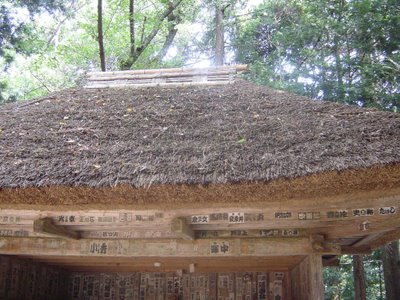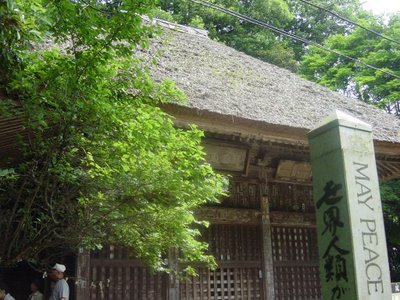Nature In Mashiko, A Pottery Town
I am a Minnesota potter working in Mashiko, the pottery town Shoji Hamada brought to the world's attention. This photolog is of images from my walks and bike rides in the countryside.
Sunday, July 23, 2006
Mashiko Cornish Pasty



 I Traveled to England, including London and all over Cornwall. I knew pasties from Northern Michigan and the North Shore of Lake Superior in Minnesota. Had them in Cornwall, where they come from and that finally inspired me to make my own. I "Mashiko-ized" the pasties by switching the Swede Turnip for Daikon and I swapped Tochigi Pork for Beef. Recipe below:
I Traveled to England, including London and all over Cornwall. I knew pasties from Northern Michigan and the North Shore of Lake Superior in Minnesota. Had them in Cornwall, where they come from and that finally inspired me to make my own. I "Mashiko-ized" the pasties by switching the Swede Turnip for Daikon and I swapped Tochigi Pork for Beef. Recipe below:Mashiko Cornish Pasty Ingredients:
Ingredients for short crust pastry1lb plain flour1/2 lb butter or a combination of thesepinch of saltcold water to mix(see measure conversions for more information)
MethodRub the fat into the flour but not too finely. I sometimes cut the fat into small lumps. Add the salt and then start adding the water gradually until it works together into a ball without being sticky. Put aside in a cool place.
Ingredients for filling
3/4 lb cooked and drained ground pork.
potato raw
Daikon section, 6 inches
onion
salt and pepper
Method:
Brown and drain the pork. Slice potato and daikon into thin, small pieces about half an inch across. Chop onion finely. Dust the work surface with flour. Roll out the pastry to about 1/4 inch thickness. Using a small plate cut out circles (Picture 2 & Picture 3). Moisten the edge with milk or water (Picture 4) and support half of the pastry nearest to you over the rolling pin (Picture 5). On the other half, put a small layer of prepared vegetables then a layer of beef (Picture 6 & Picture 7). Repeat this once but be careful not to have too much filling which would cause the pastry to burst during the cooking process (Picture 8 & Picture 9). Sprinkle sparingly with salt and pepper then add a small bit of the butter (Picture 10). Sprinkle a dusting of flour over the filling (this helps to make the gravy). Fold the other half of pastry which has been resting on the rolling pin over the filling and squeeze the half circle edges firmly together (Picture 11 & Picture 12). Starting at the right side whilst supporting the left side with other hand, using first finger and thumb turn the edge over to form a crimp (Picture 13 & Picture 14). Repeat this process all along the edge (Picture 15). This will come with practice but you must get a good seal. Brush pasty with beaten egg wash (Picture 16) to help with browning process and put a small one inch cut in the centre of the top to allow steam to escape (Picture 17 & Picture 18). Bake in a hot oven 220 degrees centigrade for about 20 minutes then reduce temperature to 160 degrees centigrade for a further 40 minutes. Smaller pasties need less time. If they are browning too quickly cover loosely with greased paper.

Sunday, July 02, 2006
Free Web Counter





























